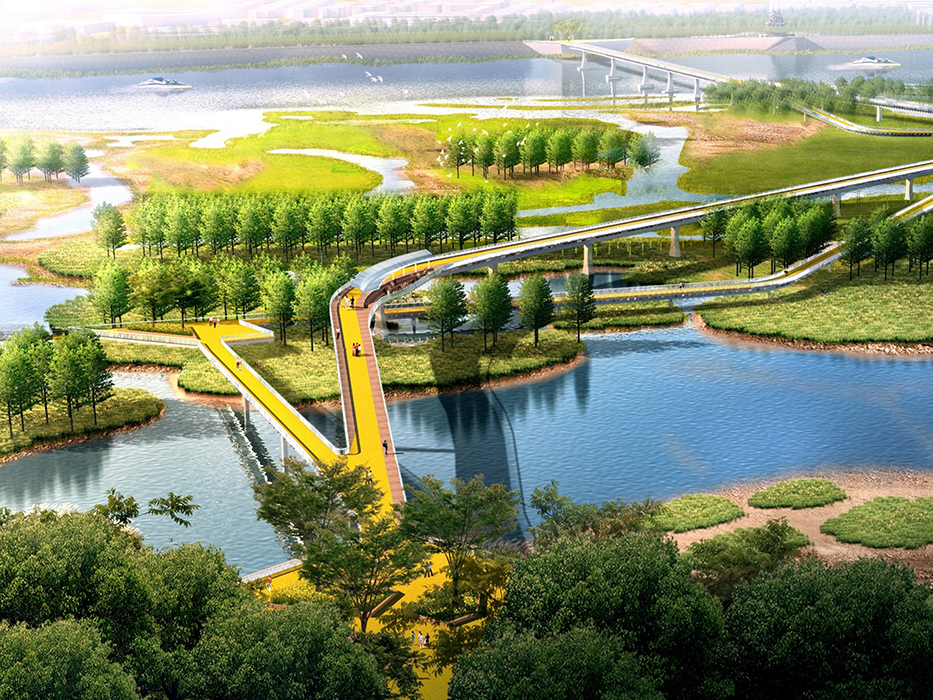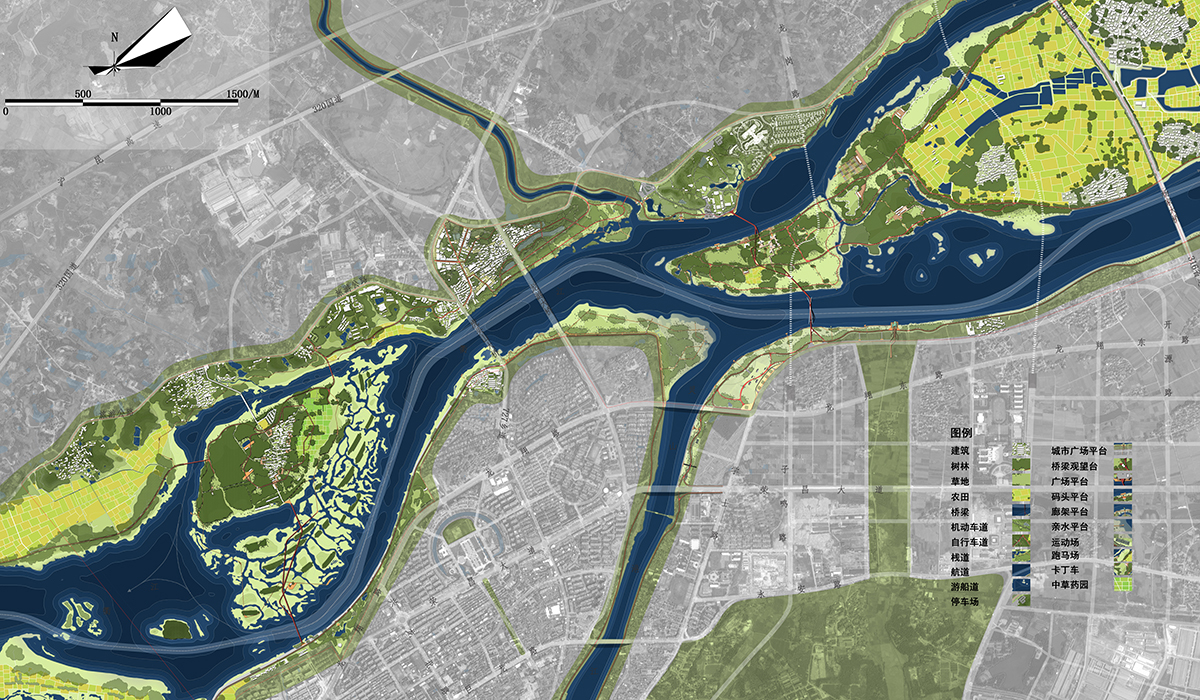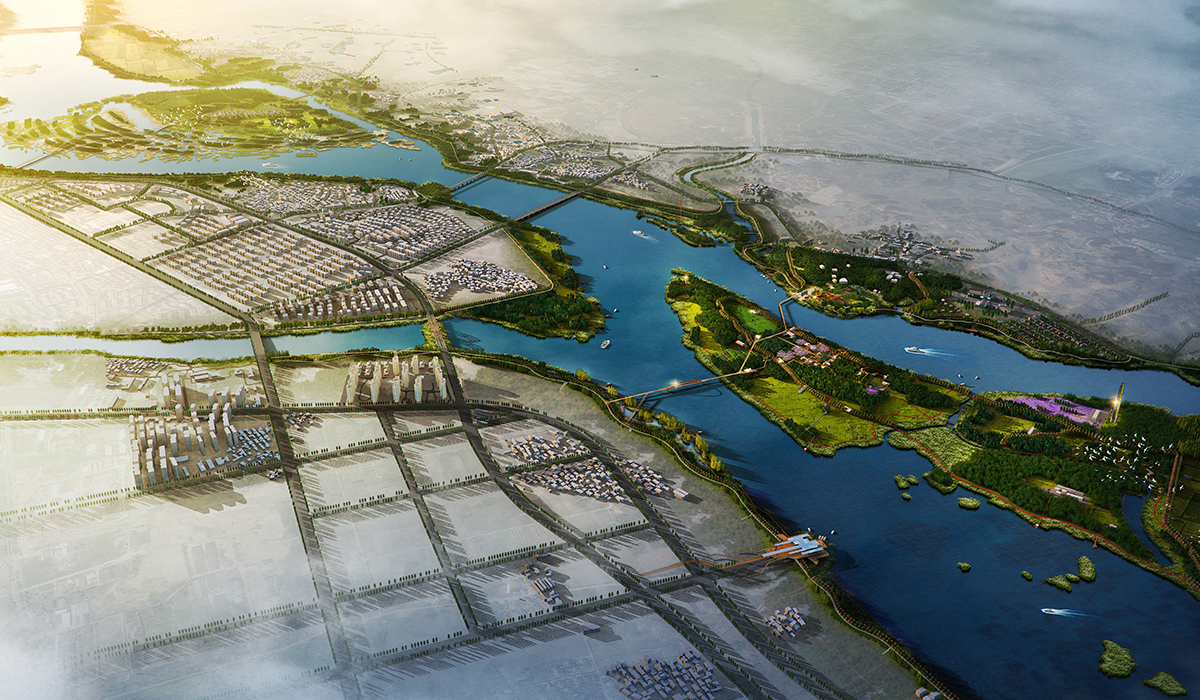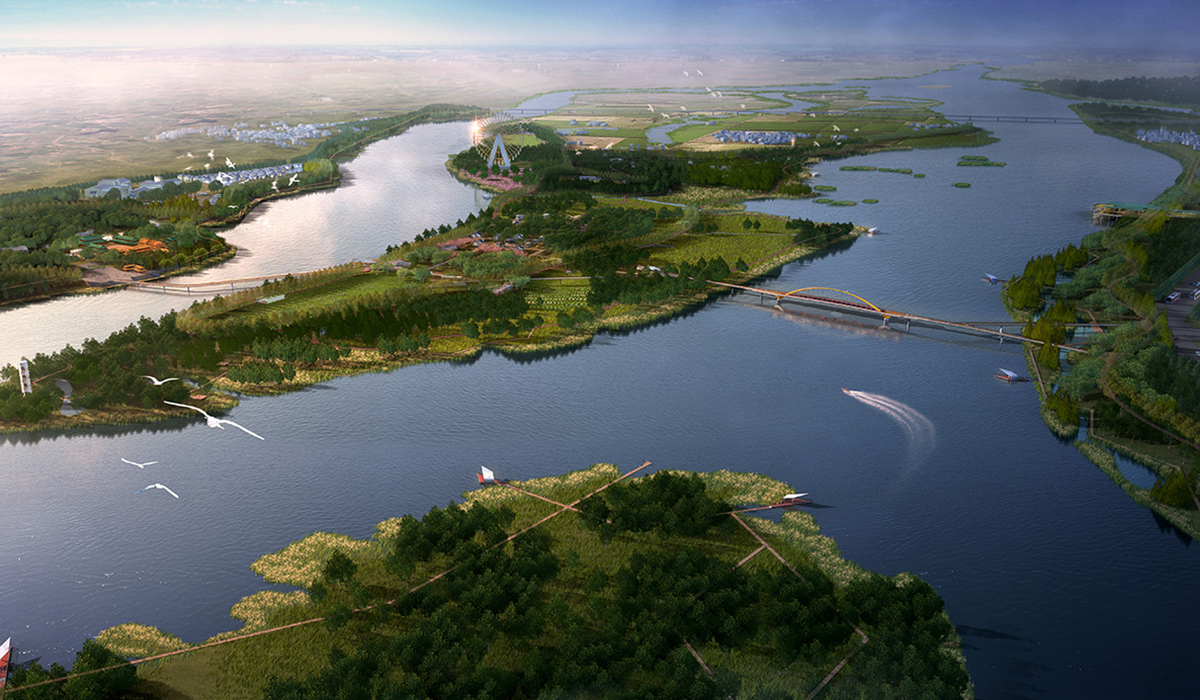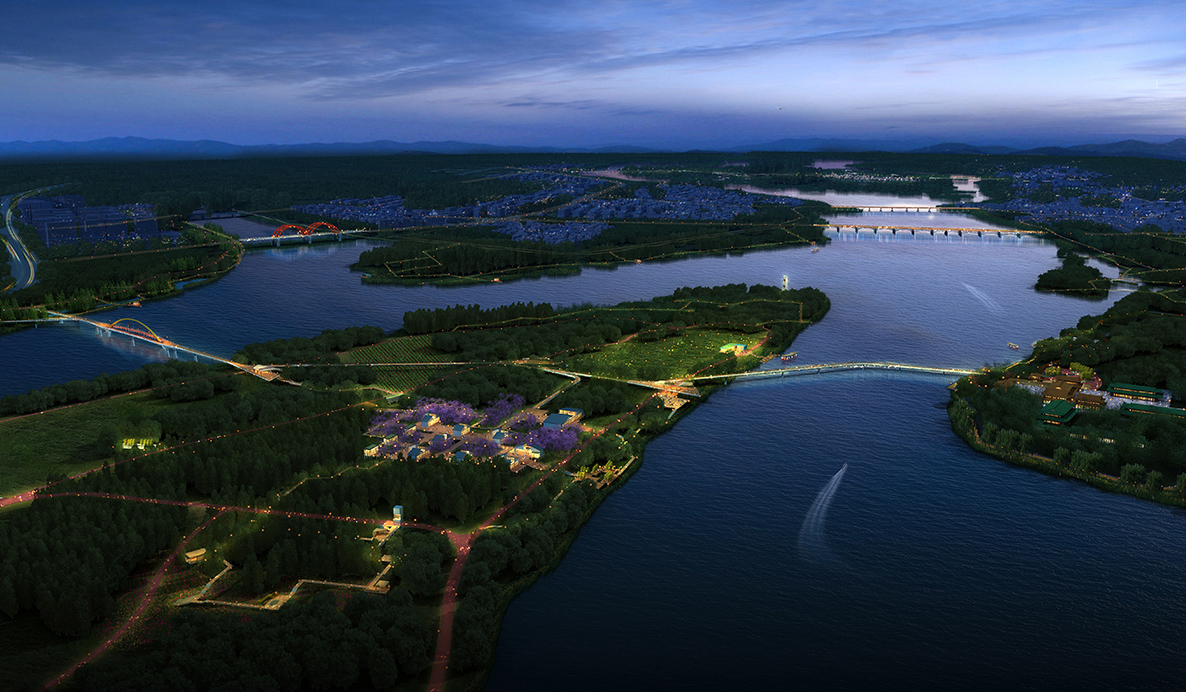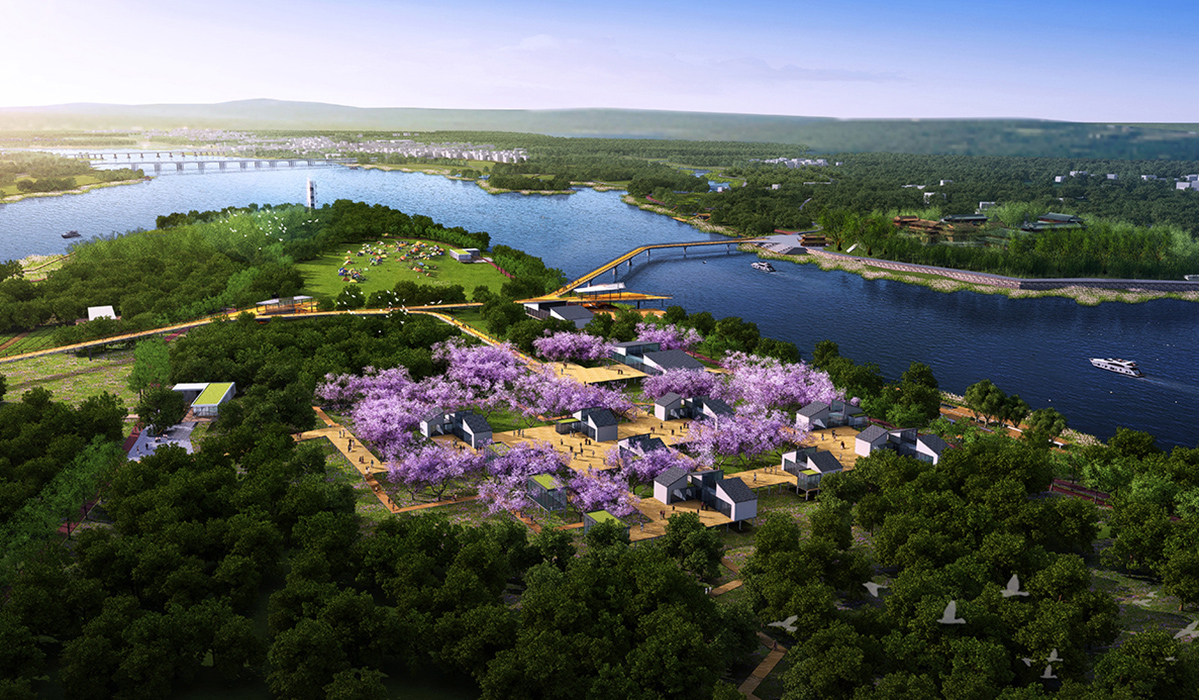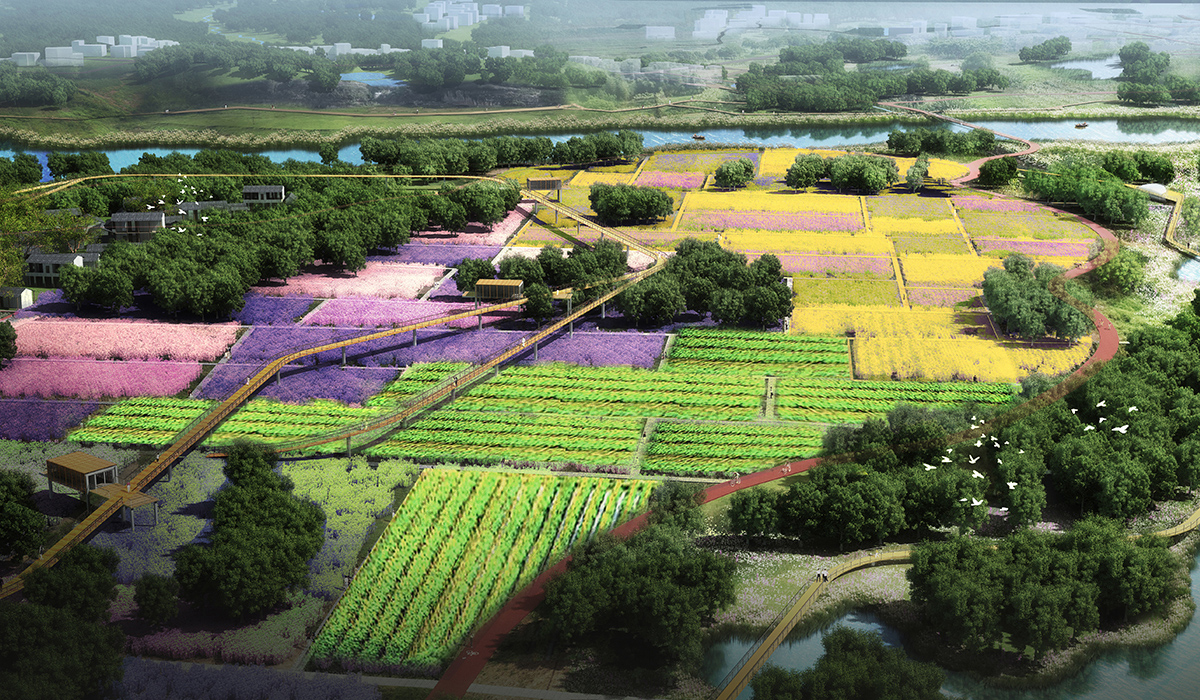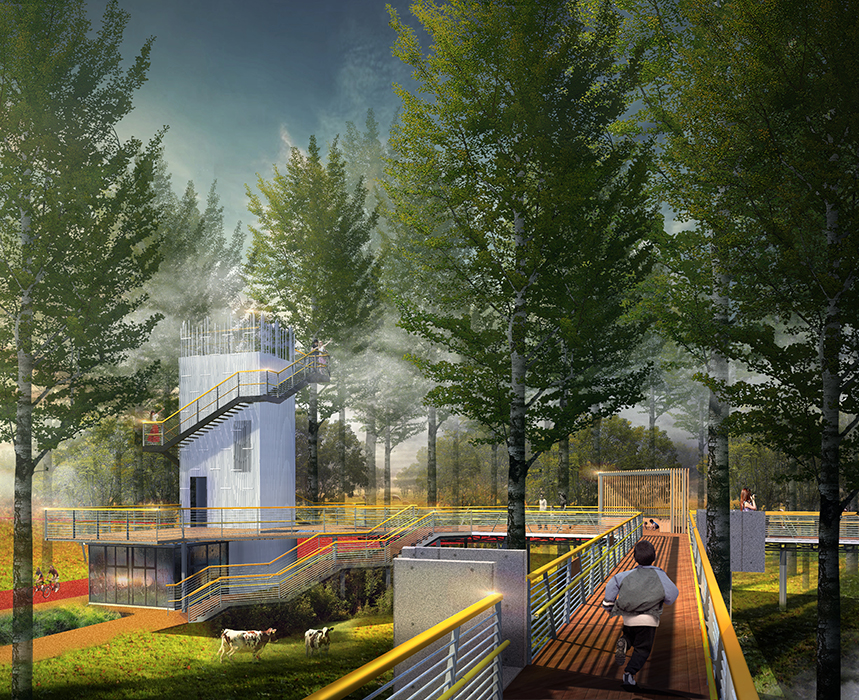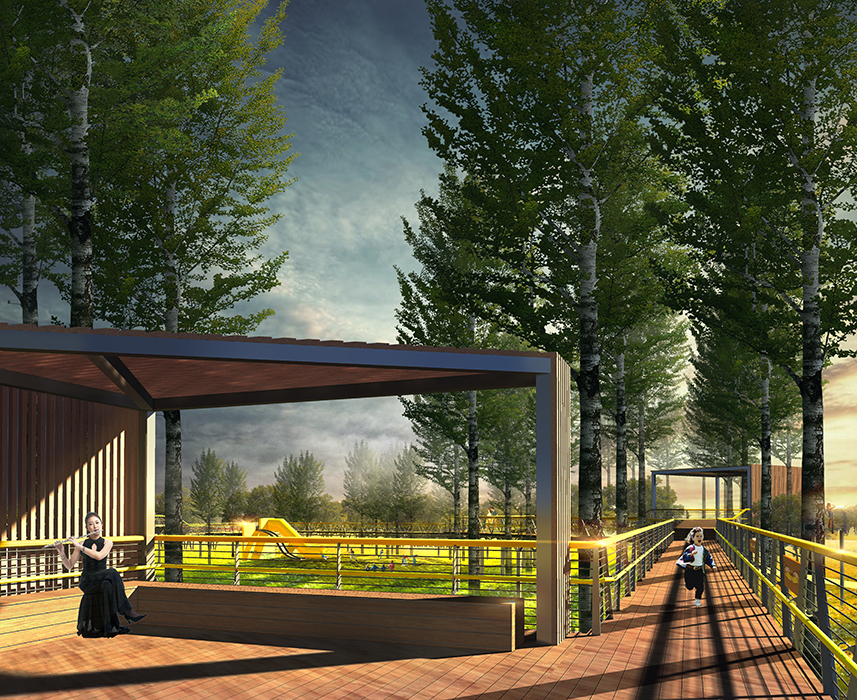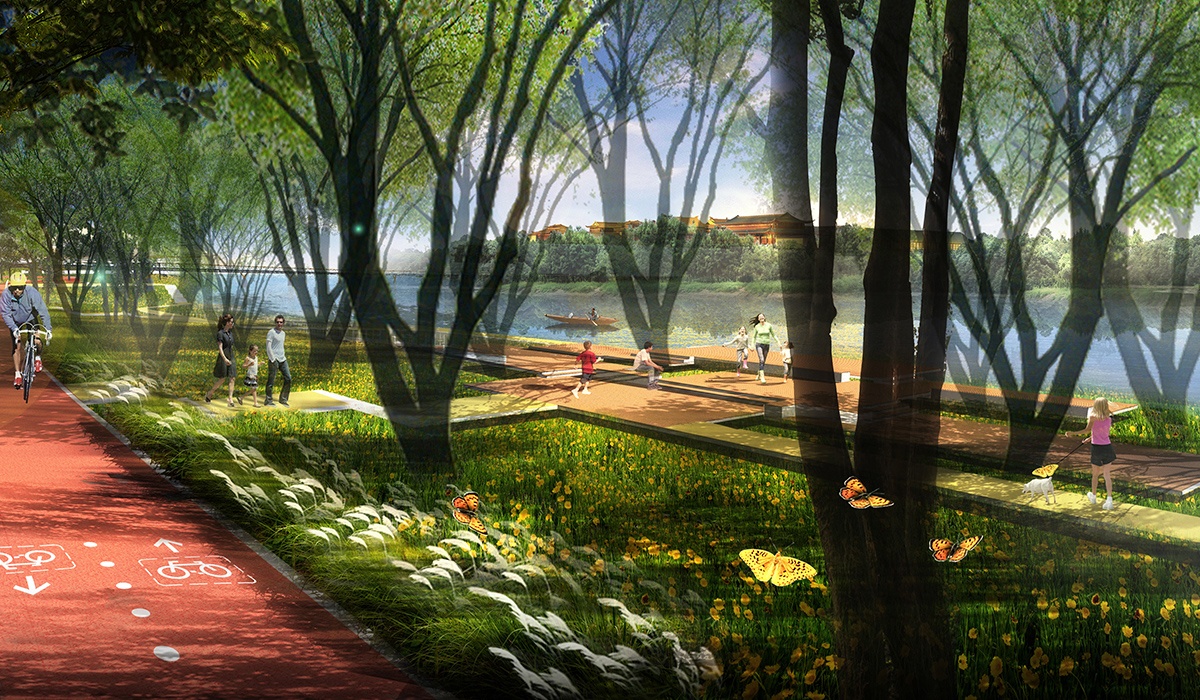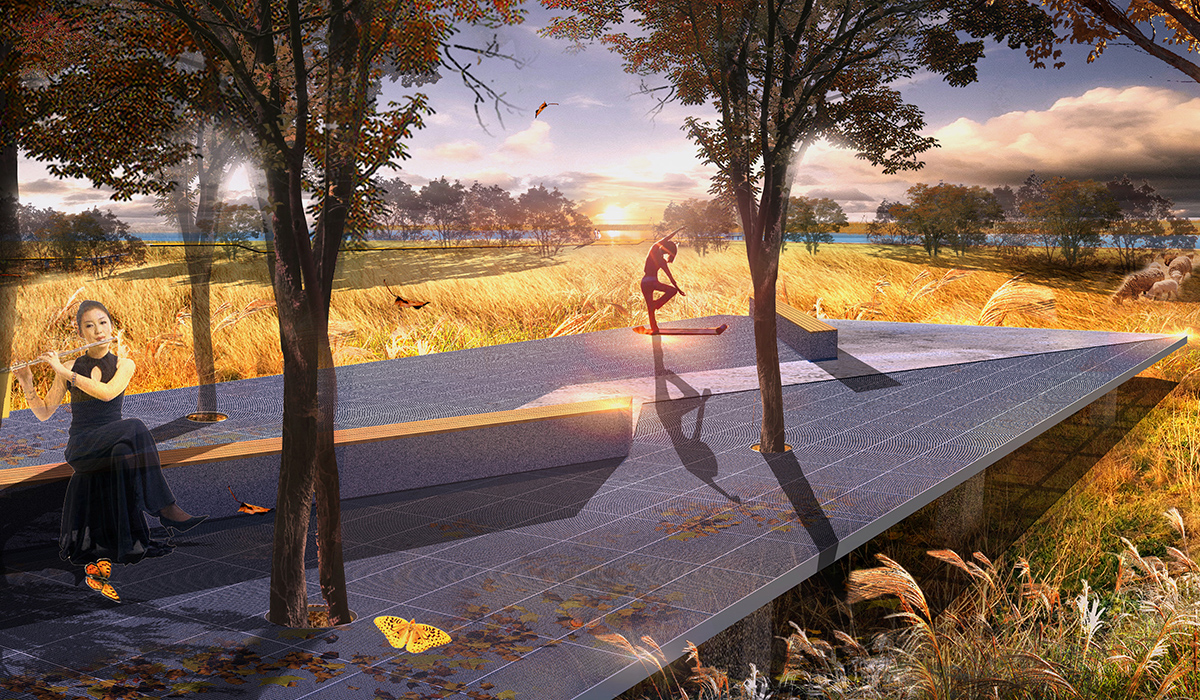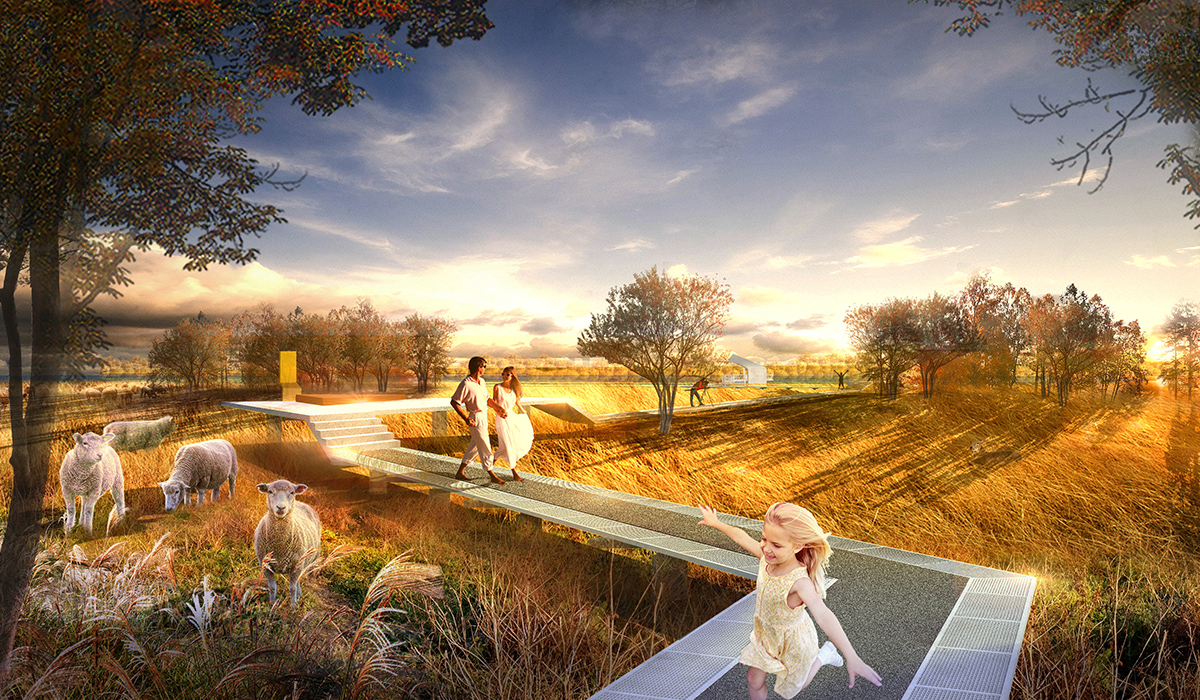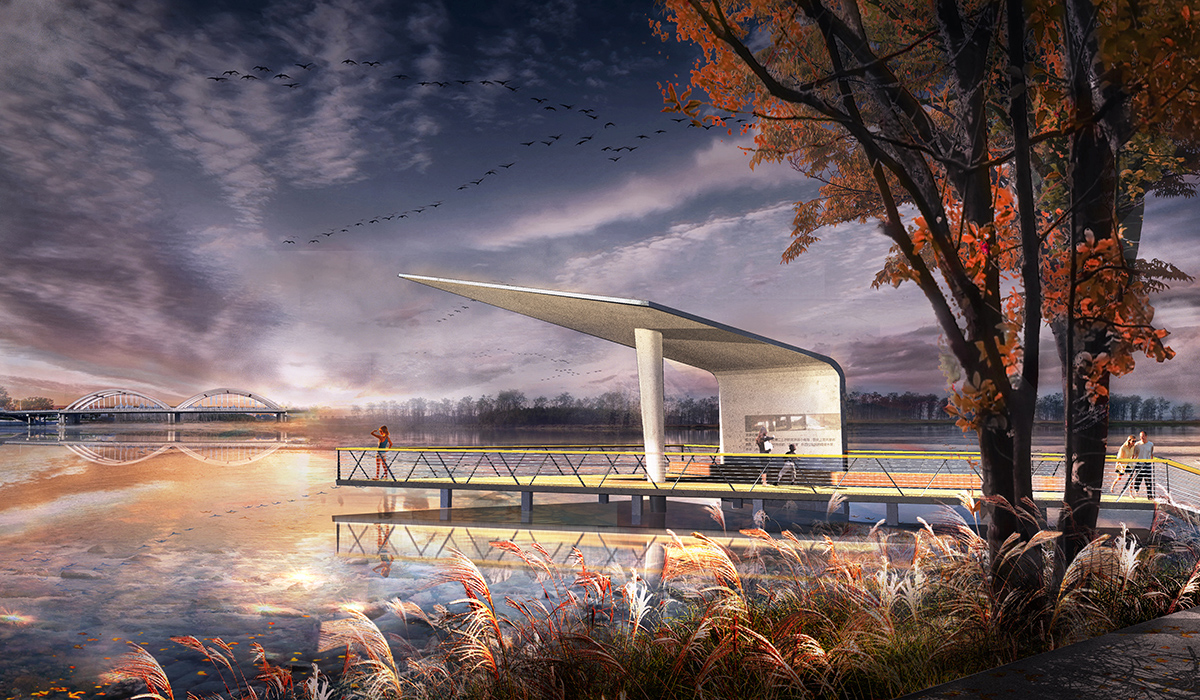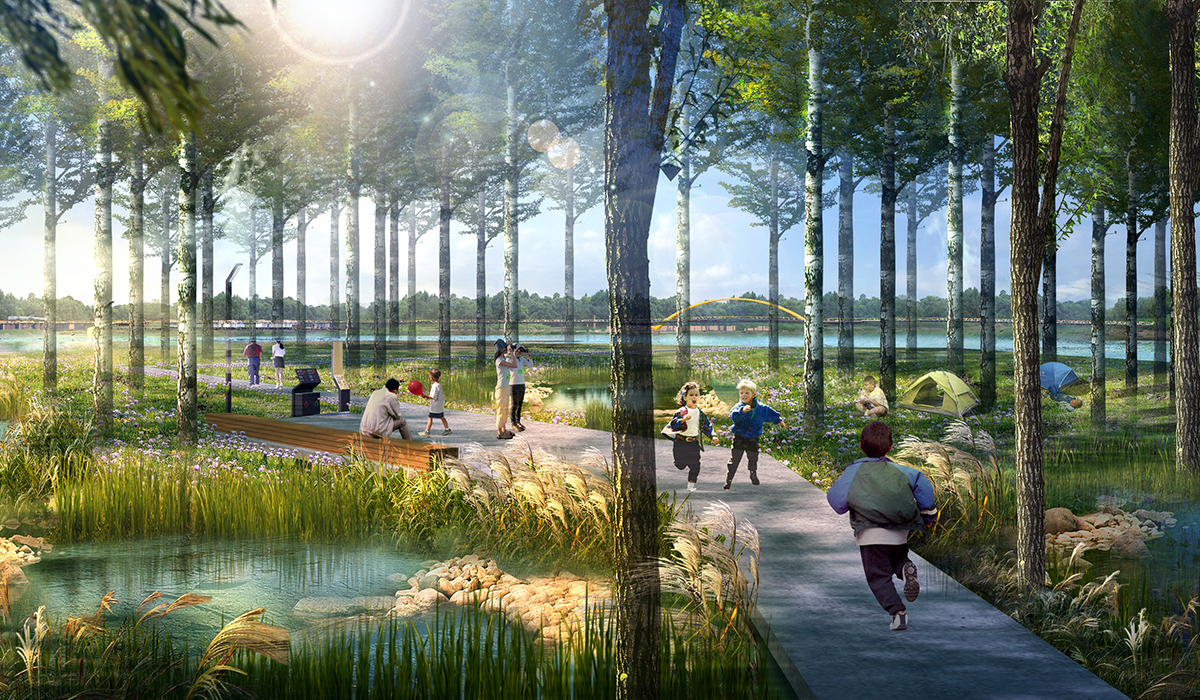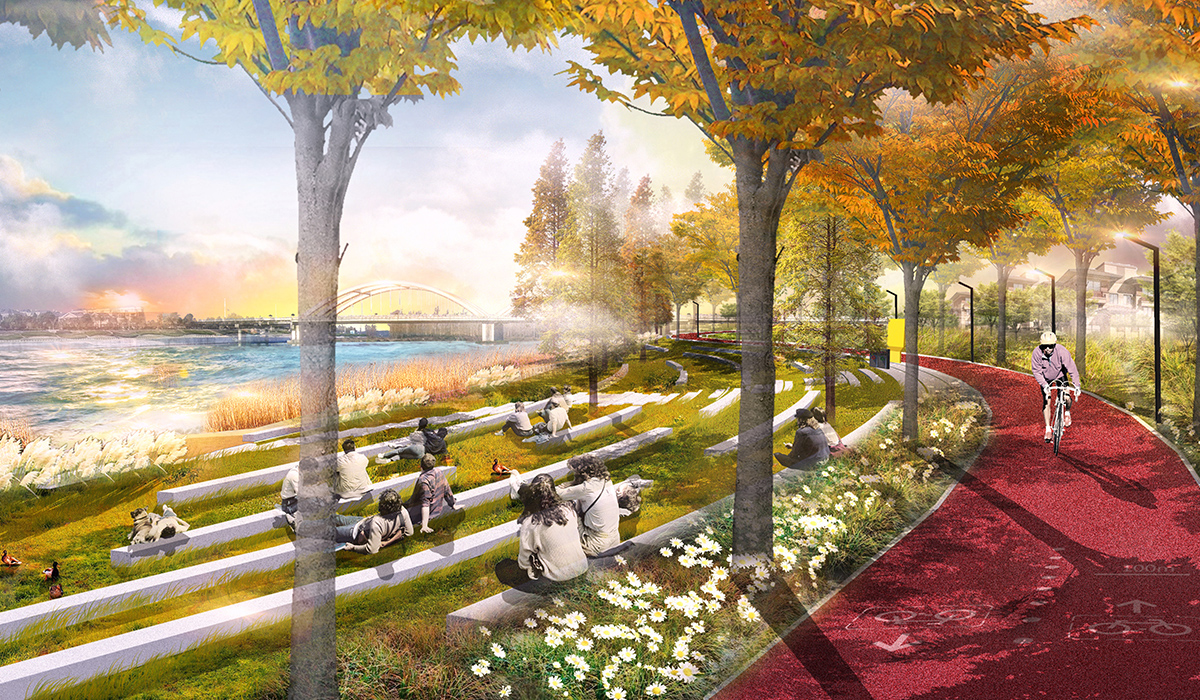Quzhou Longyou County Citizens' Ecological Leisure Park
Project Information
- Project Location:
- Quzhou, Zhejiang
- Project Scale:
- 1208.8 Hectares
- Design Time:
- February 2017
- Client:
- Longyou County Housing and Urban-Rural Development Bureau
Project Profile
1. Project Statement
Fengxiangzhou is an island in the middle of the Qu River. Its northern side is adjacent to the famous Longyou Grottoes Scenic Area, while its southern side is near the developing Chengdong New District. Over time, these three areas will become increasingly important to Longyou County. How can we strengthen the connection between them and achieve resource sharing? This project solves this problem effectively with a "floating bridge."
2. Objective and Challenge
Due to its unique geographical location, Fengxiangzhou is poised to become a vital large event space for Longyou City and a functional buffer zone connecting the city and the scenic area. To achieve these goals, several issues need to be addressed, including the island's functional positioning, ecological environment restoration, activity space division, and the renovation of old buildings.
3. Design Strategy
A. Landscape Bridge Connecting the Island to the North and South Banks
A landscape bridge is designed to connect the island to both the north and south banks. The bridge consists of one main path and four ramps. The main path runs from south to north, crossing the island, allowing access for park electric vehicles, non-motorized vehicles, and pedestrians, but prohibiting other motor vehicles. Three ramps connect the main path to the island, and one ramp connects the main path to the south bank, allowing only bicycles and pedestrians. The bridge makes it convenient for people to reach the opposite bank or the island, saving time and distance. The bridge's design also incorporates the surrounding mountain shapes, creating a unique and harmonious appearance.
B. Scenic Flood Embankment Strategy
The south bank of the Qu River features natural gentle slopes, while the north bank has numerous hardened embankments that affect the biological habitat at the water-land interface. The design suggests removing the existing hardened embankments and using the fragments to create a stone revetment for flood control, with wetland plants growing between the stones to enhance the embankment's visual appeal.
C. Low-Input, Low-Maintenance Minimal Intervention Landscape Strategy
Fengxiangzhou and its surrounding areas have dense vegetation. The design adopts a low-input, minimal-intervention landscape strategy to preserve these native plants as much as possible. Most of the existing traffic system uses the original embankment roads to minimize damage to the vegetation. All pedestrian walkways are precisely located on-site by the designers to retain every tree and create a dynamic recreational experience. Newly designed plant communities strictly select local native species, including camphor, bamboo, pine, cedar, poplar, mulberry, maple, citrus, metasequoia, juniper, podocarpus, palm, willow, osmanthus, Japanese cherry, camellia, and others. Groundcover plants include sunflower, canola, buckwheat, coreopsis, dianthus, daisy, evening primrose, verbena, gaillardia, lilyturf, centaurea, oxalis, clover, miscanthus, Mexican feather grass, pennisetum, loosestrife, reed, arundo, cattail, thalia, pickerelweed, acorus, yellow iris, water oat, bulrush, umbrella grass, smartweed, sagittaria, taro, and pennywort.
D. Renovation Strategy for Old Buildings
The site contains many abandoned buildings. The central area features unique elevated structures. Through clever design, these buildings are connected to the bridge, transforming them into pleasant recreational spaces. This preserves the historical imprint of the site while offering artistic and educational value to visitors.
4. Conclusion
Through a series of studies, planning, and design efforts, the ecological environment of Fengxiangzhou has been enriched, adding numerous recreational spaces. The landscape bridge successfully connects the island to the banks, promoting resource sharing among the three areas.
